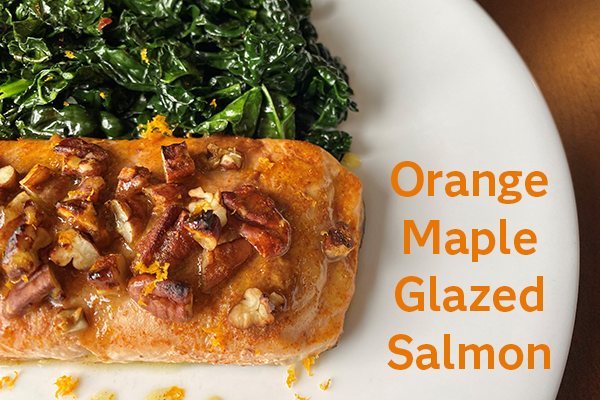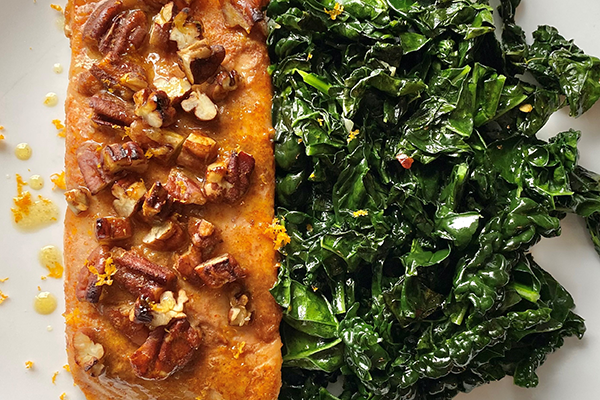When most of us consider heart health, we likely think about our cholesterol levels. But heart health is so much more than just cholesterol. Heart disease is a complex end result of multiple factors driven by things such as food intake, movement patterns, stress, and even toxin exposure.
Don’t get me wrong, having a healthy cholesterol profile is important, it’s just not the only thing that contributes to “heart health.” In particular, when we look at things that increase our risk of heart attack, stroke or heart failure, there is much more to consider.
There is no ONE cause for heart disease, which also means there is no ONE solution.
Major risk factors for heart disease include things like inflammation, oxidative stress, and insulin resistance. These factors are heavily influenced by our lifestyle – food choices, sleep, movement, etc. They are all also intertwined with each other. While oxidative stress directly contributes to the development of atherosclerosis, it also causes inflammation and is promoted by inflammation. Insulin resistance can also increase oxidative stress and inflammation.
One large study from 2022 found that for each 1% increase in HgA1c levels in those with Type 2 diabetes, the risk of dying from heart problems or being hospitalized for heart failure increased by 12% and the risk of having a stroke or heart attack increased by 8%. Even those with prediabetes have a greater risk of heart disease compared to those with “normal” glucose levels.
Heart disease is so much more than cholesterol - it is a complex end result of multiple factors driven by food, movement, stress, and even toxin exposure. #WearRedDay #hearthealth Click To TweetWhat Not to Eat
And, as you might imagine, there is overlap in recommendations to reduce chronic inflammation and oxidative stress and improve insulin resistance and overall heart health. However, one of the biggest things you can do, beyond not smoking or drinking alcohol, that will reduce your risk of heart disease and basically every other chronic disease out there, is to greatly reduce your intake of highly processed foods and beverages.
These “ultra processed foods” unfortunately make up a large percentage of the American diet (60-70% of total calorie intake). Studies show that the higher your intake of ultra processed foods, the higher your mortality rate.
This includes packaged and processed foods like cookies, crackers, biscuits, soda, most breads, ice creams and jarred sauces. Start paying attention to ingredients – if it contains something that you wouldn’t find in a home kitchen, then it’s likely an “ultra processed food.” This isn’t just at the grocery store either, think fast foods and many restaurant foods as well.
What to Eat
Start by following the guidelines on this How to Build Heart Healthy Meals handout.
And also ensure adequate intake of:
- Omega-3 rich foods – from fatty fish like salmon, sardines, etc. 2-3 times per week
- Antioxidant rich foods – from a colorful variety of fruits and vegetables daily (ideally 8-10 servings daily)
- Herbs and spices – they are loaded with antioxidants.
You can also take a look at these blogs for more information and to get you started:
- Insulin Resistance: Understand It. Recognize It. and 7 Steps to Naturally Manage Insulin Resistance
- 5 Ways to Optimize Cholesterol with Nutrition
- Natural Ways to Lower Blood Pressure
Beyond Food
As I mentioned before, regular movement or exercise, adequate sleep, and stress management are also major lifestyle factors that impact heart health. All three can impact insulin resistance, inflammation, oxidative stress and other factors that contribute to chronic disease. So be sure to address all aspects of your health, not just nutrition, to help reduce your risk of heart disease.
Orange Maple Glazed Salmon
Recipe from: Dishing Out Health
Makes 4 servings
PRINT RECIPE
Ingredients
1 ¼ lbs center-cut salmon, cut into four fillets
¾ tsp sea salt
1 tsp orange zest, plus 3 Tbsp fresh orange juice (from 1 navel orange)
2 Tbsp maple syrup
1 Tbsp whole-grain Dijon mustard
1 tsp paprika
2 tsp fresh grated ginger
½ cup chopped pecans
finely chopped fresh parsley, for garnish (optional)
Instructions
- Preheat oven to 375º
- Arrange salmon in a 9x13-inch baking dish. Pat dry with a paper towel, and season flesh evenly with salt.
- In a medium bowl, combine orange zest and juice, maple syrup, mustard, paprika, and ginger. Mix well. (If desired, set aside 1-2 Tbsp of mixture to spoon over salmon after roasting.)
- Spoon or brush mixture over salmon fillets (extra sauce will spill over into the pan).
- Sprinkle chopped pecans evenly over each fillet, gently pressing to adhere to the flesh.
- Bake salmon for 15-20 minutes, depending on thickness, until it easily flakes with a fork.
- If desired, garnish with fresh parsley.





